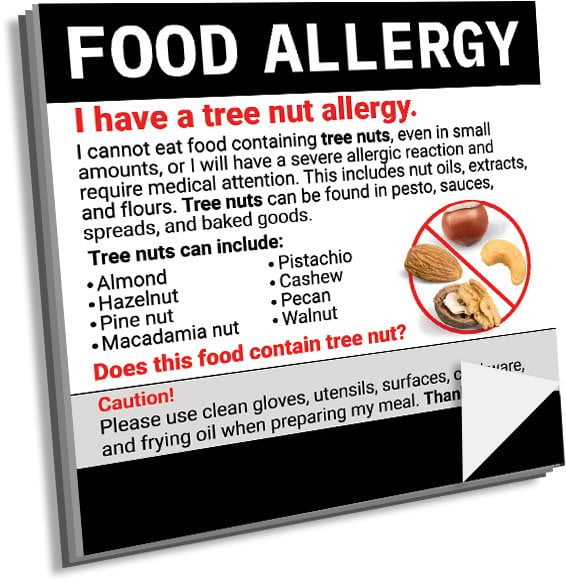Symptoms include:
- tongue tingling or itchiness
- hives, a red, raised rash that itches and is itchy in some situations but does not have a raised rash.
- swelling of the neck, face, mouth, or other parts of the body (angioedema).
- having trouble swallowing
- wheezing or breathing difficulties.
- feeling lightheaded and dizzy.
Food Allergy Symptoms
Overview
When the body’s immune system reacts abnormally to a particular food, it is known as a food allergy. Allergy symptoms are frequently minor, but they can also be highly dangerous.
Different parts of the body may experience food allergy symptoms at the same time. Some typical signs include:
Different parts of the body may experience food allergy symptoms at the same time. Some typical signs include:
- an itchiness in the ears, throat, or mouth
- a red, elevated, itching rash (urticaria, or “hives”)
- enlargement of the mouth’s roof, lips, tongue, and area surrounding the eyes (angioedema)
- vomiting
Anaphylaxis
In the worst scenarios, a person has anaphylaxis, a severe allergic reaction that can be fatal.
Call 999 if you think someone has the symptoms of anaphylaxis, such as:
- breathing problems
- difficulty speaking or swallowing
- feeling faint or dizzy
Tell the operator that you need an ambulance and that you believe the victim is suffering a serious allergic reaction.
What causes food allergies?
Food allergies occur when the immune system, the body’s line of defense against infection, misinterprets food proteins as a danger.
Several substances are consequently released. These substances are what result in allergic response symptoms.
Though almost any food can trigger an allergic reaction, particular foods are the main causes of food allergies.
The following foods tend to trigger allergic reactions:
milk
eggs
peanuts
tree nuts
fish
shellfish
some fruit and vegetables
The majority of kids who develop food allergies had eczema as infants. The likelihood that a child has a food allergy increases with the severity and age of their eczema.
Although persons with food allergies frequently also have other allergy diseases like asthma, hay fever, and eczema, the exact cause of food allergies is still unknown.
Types of food allergies
Depending on the signs and timing of the allergy, there are three categories that it can fall under.
The most prevalent type of food allergy is IgE-mediated, which is brought on by the immune system’s production of an antibody called immunoglobulin E. (IgE). A few seconds or minutes after eating, symptoms start to appear. This kind of allergy carries a higher risk of anaphylaxis.
Non-IgE-mediated food allergy: Immune cells other than immunoglobulin E are responsible for these allergic responses. Due to the prolonged onset of symptoms, this form of allergy is frequently challenging to diagnose (up to several hours).
Food allergies that are both IgE- and non-IgE-mediated can present symptoms in some persons.
Oral allergy syndrome (pollen-food syndrome)
Some people suffer mouth and throat itching right away after consuming fresh fruit or vegetables, occasionally accompanied by slight swelling. Oral allergy syndrome is the term for this.
Allergy antibodies mistake specific proteins in fresh fruits, nuts, and vegetables for pollen, which results in oral allergy syndrome.
The symptoms of oral allergy syndrome are often mild, and any fruit or vegetable can be fully cooked to destroy the allergens.
Treatment
Finding the offending food and avoiding it are the best ways to avoid an allergic response.
Some dietary allergens, like peanuts and milk, are being researched for ways to desensitize people to them, although this is not a recognized medical procedure in the NHS.
Avoid altering your or your child’s diet drastically, such as by eliminating dairy products, without first consulting your doctor. Before making any modifications to certain foods, such as milk, you might need to consult a dietician.
Antihistamines can aid in the relief of mild to moderate allergic response symptoms. Frequently, a greater antihistamine dosage is required to manage severe allergy reactions.
Anaphylaxis and other more severe allergy symptoms can be effectively treated with adrenaline.
An auto-injector pen, which stores dosages of adrenaline that can be used in emergencies, is frequently supplied to people with food allergies.
When to seek medical advice
Asking your doctor for a professional diagnosis of a food allergy is crucial if you suspect that you or your kid may be affected. If necessary, they can then direct you to an allergy clinic.
When a kid’s symptoms are caused by something entirely different from a food allergy, many parents incorrectly believe that their child has a food allergy.
There are commercial allergy testing kits available, however their use is not advised. Many kits are constructed on dubious scientific theories. Even if they are accurate, you ought to have a doctor review the findings.
Who is impacted?
Most children under the age of three who have food allergies are younger ones.
By the time they enter school, the majority of kids who were allergic to milk, eggs, soy, and wheat as young children will have outgrown them.
Allergies to peanuts and tree nuts typically last longer.
Adult-onset food allergies and those that last into adulthood are likely to last a lifetime.
The prevalence of food allergies has significantly increased during the past 20 years, for unknown causes.
However, anaphylaxis-related food responses now only rarely result in fatalities.
What is food intolerance?
Food intolerance and food allergy are not the same thing.
Symptoms of food intolerance include diarrhea, bloating, and stomach pains. This might be brought on by issues with the way some substances, including lactose, are digested. However, there is no allergic reaction.
Among the key distinctions between a food allergy and an intolerance are :
- Item intolerance symptoms typically appear several hours after consuming the offending food.
- Compared to allergies, food intolerances require more food to cause a reaction.
- Contrary to allergies, a food intolerance never poses a life-threatening risk.

